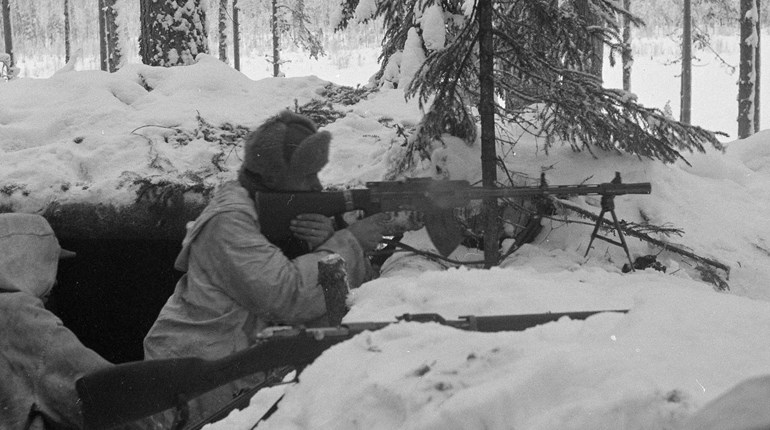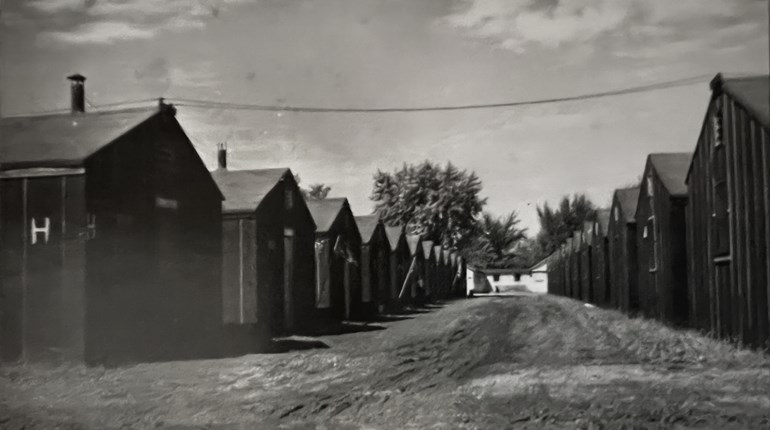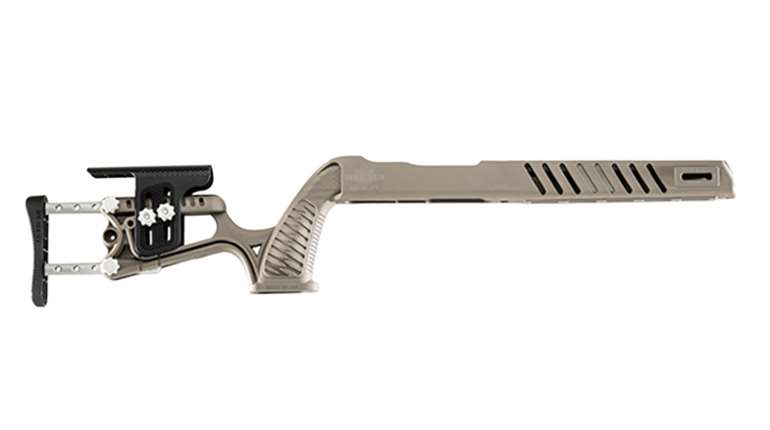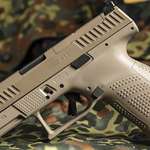
By January 1944, the Allied advance in Italy had come to a grinding halt. Four months earlier, landings in the south along the Ionian and Tyrrhenian Sea coasts, the Gulf of Taranto and the Gulf of Salerno had brought war to the lo stivale (“the boot”). But autumn’s grand aspirations for a swift victory over Axis forces in Italy quickly gave way to the realities of winter weather and the Gustav Line. When the drive north toward Rome bogged down in December 1943 along Highway 6 in the Liri Valley, Allied leaders came up with a plan to outflank the enemy. They would do this with a surprise, multi-divisional amphibious landing 30 miles south of Rome on beaches around the seaside towns of Nettuno and Anzio. Codenamed SHINGLE, it was hoped that this operation would open a corridor to “The Eternal City” that would force the Germans to withdraw to the north.
With U.S. MG John P. Lucas in command, the Operation SHINGLE assault force of 36,000 men stormed ashore on Saturday, Jan. 22, 1944 against initially light opposition. Early gains were encouraging: U.S. Army Rangers captured Anzio’s port, U.S. Army paratroopers captured Nettuno, the U.S. 3rd Infantry Division penetrated 3 miles into the interior and the British 1st Infantry Division penetrated 2 miles. While this was encouraging, a lack of aggressive action on the part of MG Lucas opened up an opportunity for the Germans to counterattack the beachhead—and counterattack they did. By the third day, 40,000 German troops had the SHINGLE landing force surrounded. Vicious and powerful counterattacks fell upon the perimeter around Nettuno and Anzio during the weeks that followed.

At one point during those days of intense combat, a U.S. Navy officer named Frank Grismer recovered a remarkable artifact from the beachhead—an M1928A1 Thompson submachine gun. With a horizontal foregrip, a Lyman adjustable rear sight, heat-dissipating cooling fins and a Cutts compensator on the barrel, the “Tommy Gun” that Grismer found near Anzio looked much like the ones being issued to the U.S. military, with one notable difference: the placement of the sling swivels. One swivel was mounted to the top of the buttstock (opposite the usual position), and the other was mounted to the left side of the foregrip. This placement identified the gun as being a Lend-Lease Thompson sent to the U.K. to arm Commonwealth forces, and thus marked it as being part of a unique chapter in World War II small arms.
In the years after World War I, John Taliaferro Thompson’s Auto-Ordnance Company designed and developed the .45-caliber submachine gun that would ultimately arm so many of the men who fought World War II. The “Tommy Gun” was first obtained by the U.S. Marine Corps in 1926, then by the U.S. Navy in 1928, and the U.S. Army finally standardized it in September 1938. But, the 15,000 rifles that had been produced by Colt for Auto-Ordnance in the early 1920s were just about gone by the late 1930s, so the weapon went back into production in February 1941. Initially only Auto-Ordnance was producing the weapon, but eventually the Savage Arms Corporation of Utica, NY, was subcontracted in an effort to keep up with government orders. Savage production of the M1928A1 obviously made a significant difference because, by February 1942, more than 500,000 had been made. The bulk of the M1928A1 Thompsons produced in 1941 and 1942 were Lend-Lease guns meant for the U.K. and they are uniquely recognizable by the spelling of the word “CALIBRE” on their receivers.
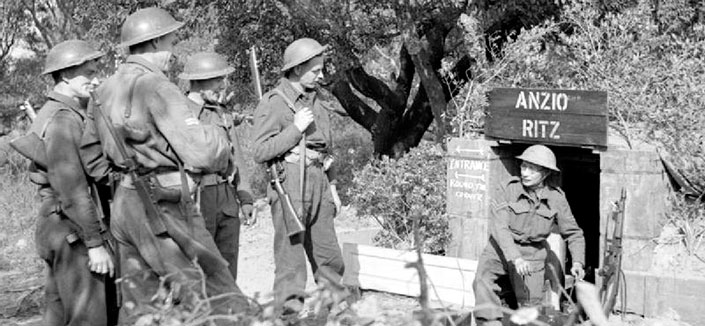
The Lend-Lease M1928A1 Thompson that Grismer recovered from the battlefield at Anzio in 1944 was made by Savage and carries serial number #S-169807. Before it left Italy, it armed an unknown British soldier during the closing moments of his life because, when his body was recovered, he was still clutching #S-169807, and 19 dead Germans littered the ground in front of him. He was just one of the more than 7,000 men killed inside the Anzio beachhead during the winter of 1944. In the end, Operation SHINGLE did not succeed in outflanking the Gustav Line and opening up the road to Rome, and one month to the day after it all began, MG Lucas was replaced.
The incident stands as yet another example of the astonishing cost of the Second World War. The month of January brings the anniversary of Operation SHINGLE and, therefore, the anniversary of the loss of a brave young British soldier who fought to the bitter end with his American-made Savage M1928A1 Thompson submachine gun.












